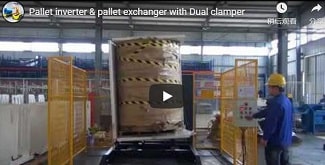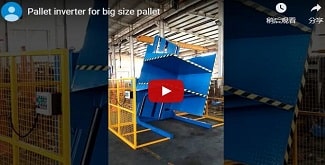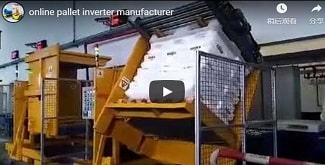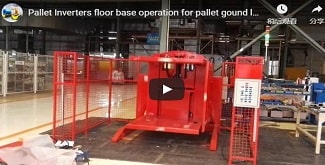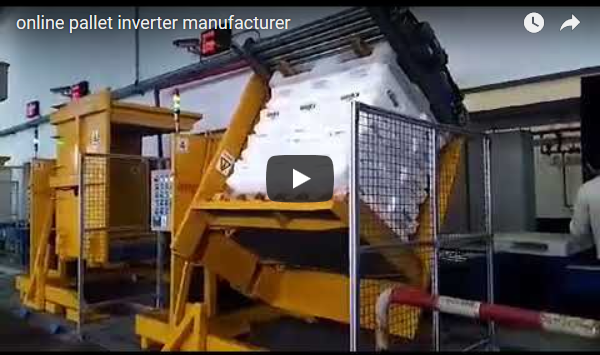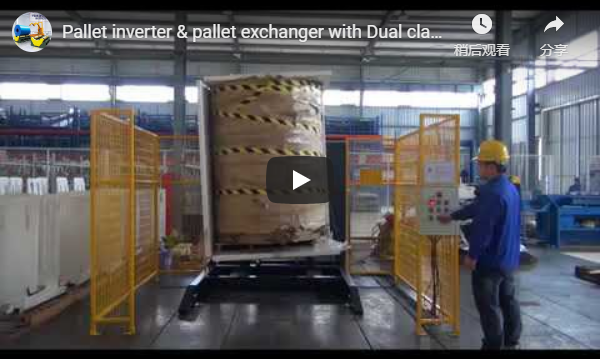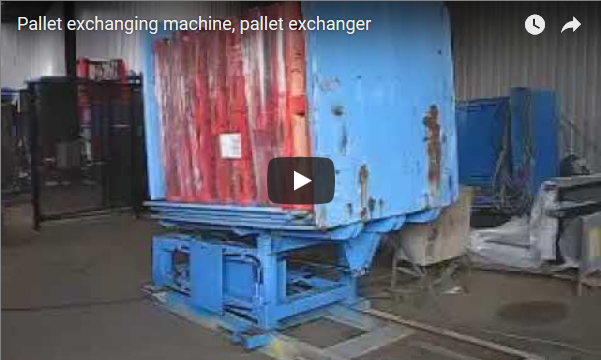Enhancing Warehouse Operations: The Fhope Dual Clamp Floor-Level Pallet Inverter
Efficiently handling and transferring palletized loads is a cornerstone of modern logistics and manufacturing. Challenges such as damaged pallets, the need to switch pallet types (e.g., wood to plastic), or accessing products at the bottom of a stack require specialized equipment. Pallet inverters offer a robust solution for these tasks, and this post delves into the specifics of the Fhope dual clamp, floor-level pallet inverter model.
This particular machine configuration is designed as an alternative to conventional load handling methods, providing distinct advantages in certain operational contexts.
1. Understanding the Dual Clamp Floor-Level Pallet Inverter
This type of pallet inverter features two key design elements:
- Dual Clamping Mechanism: Unlike single-clamp models, dual clampers apply pressure from both the top and side (or sometimes double top clamps depending on the specific variation). This provides enhanced stability and security, particularly beneficial for handling unstable, heavy, or irregularly shaped loads during the 180-degree inversion process.
- Floor-Level Loading: The machine base sits flush with the warehouse floor, allowing direct loading and unloading using standard pallet jacks or forklifts without the need for ramps or pits. This simplifies integration into existing workflows and improves accessibility.
2. Key Features and Technical Specifications
While specific configurations can vary, typical technical parameters for a machine of this type include:
- Load Capacity: Often ranges from 1000 kg to 2000 kg (approx. 2200 lbs to 4400 lbs).
- Rotation Angle: Standard 180 degrees for complete load inversion.
- Clamping System: Hydraulically powered dual clamps with adjustable pressure to suit different load types and prevent product damage.
- Clamping Range (Opening): Designed to accommodate various load heights, often adjustable within a range (e.g., 800mm - 2000mm).
- Pallet Size Compatibility: Typically handles standard pallet sizes (e.g., 1200x1000mm, 1200x800mm), but can be customized.
- Loading Method: Floor-level access via pallet jack or forklift.
- Control System: Usually employs PLC (Programmable Logic Controller) with a user-friendly interface (push buttons or HMI touchscreen).
- Power Requirements: Specific voltage and phase (e.g., 380V/50Hz/3Ph or 480V/60Hz/3Ph), dependent on regional standards.
- Safety Features: Emergency stop buttons, safety guarding or light curtains, hydraulic pressure safety valves.
- Construction: Robust steel frame built for industrial environments.
3. Operational Workflow and Benefits
The typical operational sequence involves:
- Loading: The palletized load is placed directly onto the inverter's loading platform using a pallet jack or forklift.
- Clamping: The operator initiates the clamping sequence via the control panel. The dual clamps secure the load firmly but gently.
- Inversion: The machine rotates the secured load by 180 degrees.
- Pallet Exchange (if applicable): The original pallet (now on top) can be removed and replaced with a new one.
- Return Rotation: The machine rotates the load back to its original orientation (or keeps it inverted if required).
- Unclamping: The clamps release the load onto the new pallet (or the original pallet if merely inverting).
- Unloading: The load, now on the desired pallet, is removed from the machine using a pallet jack or forklift.
Key Benefits:
- Enhanced Stability: Dual clamps provide superior load control during inversion, reducing the risk of product shifting or damage, especially for tall or unstable loads.
- Improved Efficiency: Floor-level loading eliminates ramp negotiation or pit requirements, speeding up the loading/unloading cycle.
- Increased Safety: Reduces manual handling associated with restacking loads or dealing with damaged pallets. Contained operation minimizes risks.
- Versatility: Capable of handling a wide range of product types and facilitating tasks like pallet exchange, slip sheet transfer, or freezer spacer removal.
- Reduced Product Damage: Gentle clamping and controlled rotation minimize stress on the goods compared to manual methods.

4. Common Applications and Use Cases
Dual clamp, floor-level pallet inverters find application across various industries:
- Warehousing and Distribution: Replacing broken or damaged pallets, transferring goods from wooden pallets to hygienic plastic pallets (common in food/pharma), consolidating loads.
- Manufacturing: Inverting loads for access to bottom layers, rotating materials for processing steps.
- Food and Beverage: Switching to in-house or cleanroom pallets, handling temperature-sensitive goods requiring specific pallet types.
- Pharmaceuticals: Ensuring compliance with stringent hygiene standards by transferring loads to sanitized pallets.
- Printing and Paper: Handling large, heavy reels or stacks of paper or board.
5. Considerations for Implementation
Before integrating such a machine, factors to consider include:
- Floor Space: Ensure adequate footprint for the machine and maneuvering space for loading/unloading equipment.
- Floor Strength: Verify the floor can support the machine's weight plus the maximum load capacity.
- Power Supply: Confirm availability of the correct electrical service.
- Operator Training: Ensure personnel are properly trained on safe operation and basic troubleshooting.
- Maintenance Schedule: Implement regular checks and preventative maintenance as recommended by the manufacturer.
Learn more about different pallet inverter solutions:
Back to front page: https://www.fhopepack.com/pallet-inverter/
Explore different pallet inverter models and operations through these videos:



